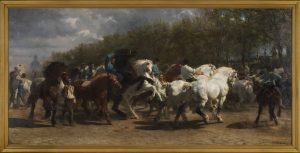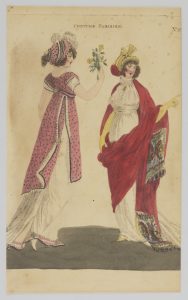Working with Images
J. Keri Cronin and Hannah Dobbie

Image Source: The Metropolitan Museum of Art (Public Domain)
Reliable Sources of Images
When we are looking for images to use in assignments or presentations it is tempting to simply open our favourite online search engine or social media platform and find images that way. But how can you know that what you are finding is trustworthy? Is it an edited image? Is the caption correct? Was it generated by AI? How would you know? Why does it matter?
There are better ways to locate images for your projects. If you have access to a university or college library, you may be able to log-in to a database like ARTstor. (note: for Brock students, the Brock Library subscribes ARTstor) ARTstor has thousands of high resolution images that can be downloaded and used for assignments. When you find an image in ARTstor you can trust that the information that accompanies it has been researched and approved by experts in the field. The downside of ARTstor is that it isn’t free. It is behind what is called a “paywall”–basically this means that the library has paid the subscription fees so that you can use it. This is why you have to log-in with your credentials. Students who have paid their tuition fees can access ARTstor, but once they graduate they will no longer have access to it.
There are other great places to find images online, many of them open access and free. Many art galleries, museums, historical societies, libraries, and universities are in the process of digitising their collections, so this list continues to grow. Here is a very small sampling of some great places to find images to work with:
- New York Public Library
- The Metropolitan Museum of Art (including their Costume Institute)
- The Wellcome Collection
- The Rijksmuseum
- The Library of Congress
- The McCord Stewart Museum
- The Art Institute of Chicago
In each of these cases the images come from a trusted, credible source and have been verified by experts in the field. You can trust that the information you get from these sites is accurate.
You will want to make sure to read the terms and conditions for each site to make sure that what you intend to do with the images you download is permitted. In most cases scholarly work and educational uses are permitted. Commercial and social media uses often require extra layers of permission.
Exercise
Find three museums or galleries that have digital collections of images that are of interest to you.
For each one, answer the following questions:
- How do you know you can trust the information provided on this site? Be specific–is it a reputable museum? Is there information about the collection that seems trustworthy?
- What are the terms of use for the images? For instance, can you reproduce them freely? Is there a fee? Is it a mix of different rules?
- What did you discover or learn by taking the time to explore these sites? Did you find some images you might like to learn more about?

Citing Images
It is as important to cite your images sources as it is to cite any other sources you use in your assignments. You always want to give credit where credit is due! Think of how you would feel if someone used an image you created and didn’t give you credit.
If you reproduce an image in a presentation or an assignment there should be an image caption immediately underneath that image. The information listed will vary depending on the type of image and what is known about it. Generally speaking you want to list: the name of the artist/image maker, the title of the image, the date it was made, the type of image it is (e.g.: is it a photograph, a mural, a sculpture, etc.), and information about where you retrieved it from.
A typical format for an image caption is:
Name of Artist/Image Maker, Title of work underlined (or in italics) (type of image, date) Image Source: [Museum or URL or other source information goes here]
If you are writing a paper that includes images it is good practice to include a separate image list at the end of the paper with the information about each image listed. You should do this even if you have put a caption underneath the image embedded in your paper. Images are not listed in your regular bibliography.
Images are typically not part of your page count for your assignments. You may choose to embed them in your papers, but it is often easier to append them to the end of the paper.


